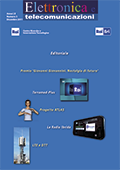
the complete issue ( pdf) |
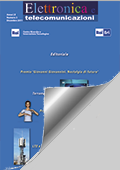
il nthe complete flipping issue (swf) |
|
Cover |
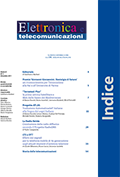 |
Contents |
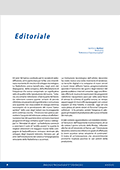 |
|
|
‘Giovanni Giovannini. Nostalgia di futuro’
Award to Rai and University of Parma
.
|
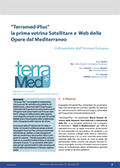 |
Terramed-Plus
The first Satellite and Web showcase of the Mediterranean audiovisual Works
by Mauro Rossini,Bruno Iovenitti,Germana Mudan and Micol Pancaldi
Terramed-Plus is an international cooperation project gathering public Mediterranean broadcasters, co-funded by the European Union within the Euromed Audiovisual III Programme. The Euromed Audiovisual III Programme aims at developing and strengthening the cinematographic and the audiovisual capacity in the South-Mediterranean countries and at promoting the complementarities and the integration of the industry of the region.
On the occasion of the 63° edition of the Prix Italia, in Turin, a press conference was held to present Terramed-Plus main actions: the setting up of a weekly window promoting via satellite and via web Mediterranean TV programmes such as documentaries, fictions, films, cartoons etc., as well as a video-on-demand web platform providing access to 115 hours of products realized by the partner channels, subtitled and in free streaming.
The project, having Rai as project leader, gathers a wide consortium: ARTE France, EPTV (Algeria), France Télévisions, RTVE (Spain), SNRT (Morocco) and TéléLiban, COPEAM for the international coordination and Skylogic-Eutelsat as technological partner.
|
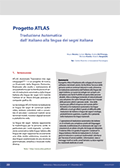 |
ATLAS PROJECT
Automatic Translation in Italian Sign Language
by Mauro Rossini, Carmen Marino, Andrea Del Principe, Michele Visintin, Roberto Borgotallo
Atlas project is aimed to develop software tools and user devices to facilitate the access of deaf people to television and web contents, through the automatic translation from Italian into Italian Sign language. The new technologies are not always easily accessible for disabled people, Atlas concur to industrialize a solution to fill the gap existing between the world of hearing people and deaf people. One of the most difficult challenges taken from the world of information technology is the automatic translation between different languages; the complexity of the translation from Italian to sign language is similar, probably more difficult than the translation between national languages.
The automatic translation from Italian to LIS requires a complex analysis of natural language, the definition of a dictionary of signs and the creation of a virtual interpreter. Atlas technology is able to acquire Italian contents and provides a translation in LIS of television programs and multimedia contents, interfaces for access to public services, information, news and messages addressed to deaf individuals, regional or national thematic channels for deaf people.
|
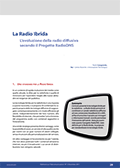 |
Hybrid Radio
Evolution of broadcast radio with the RadioDNS Project
by Paolo Casagranda
The paper presents hybrid radio technology. Hybrid Radio allows to combine a broadcast channel to a broadband 3G or WiFi networks, in order to enrich the service with images and textual information and to allow interaction. The paper then describes the mechanisms and applications proposed by the RadioDNS Project, state of the art for Hybrid Radio. |
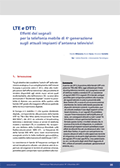 |
LTE and DTT
Effects of 4th generation mobile telephony signals on existing community antenna TV systems
di Davide Milanesio, Bruno Sacco, Vincenzo Sardella
From 2015 onwards, the portion of the UHF band between 790 and 862 MHz, today licensed to TV terrestrial broadcasting, will be assigned to mobile telephony services according to LTE standard. However, the coexistence of DVB-T/T2 and LTE signals in adjacent frequency bands might entail problems to the reception of TV signals in areas in the vicinity of the LTE Base Stations, due to an excessive interfering power falling within the bandwidth of existing domestic devices. In particular, this paper analyses the case of community antenna systems, where the LTE signals could cause the intermodulation of the head-end amplifier, impacting all TV channels. Simulations and measurements confirmed such risk: it was estimated that, without mitigation techniques, under adverse conditions receiving installations up to 1 km distance from the Base Station might be affected by the interference. In such conditions, specific mitigation techniques, chosen case by case, have to be adopted by operators (reduction of the LTE signal in particular areas, cross-polarisation, etc.) and by final users (insertion of in-line filters, use of channel amplifiers, relocation of aerials, etc.). |
|
Storia delle telecomunicazioni
A recent pubblication of Firenze University Press, in two volumes, about the History of Telecommunications.
|
cas